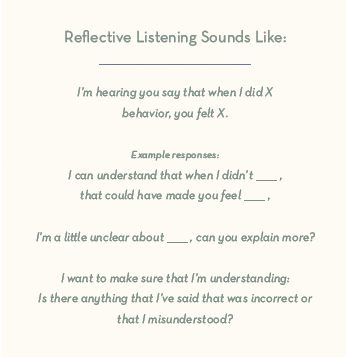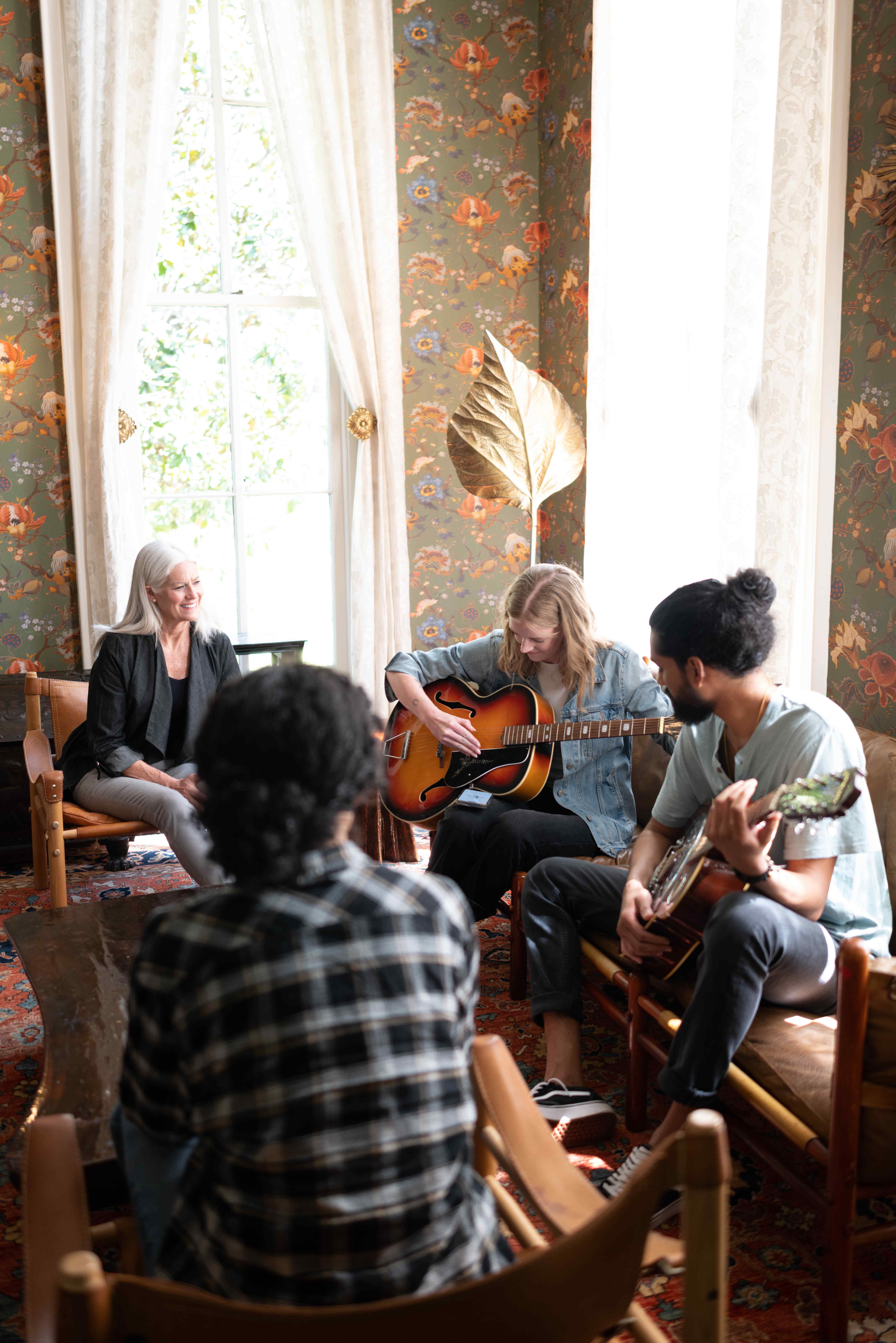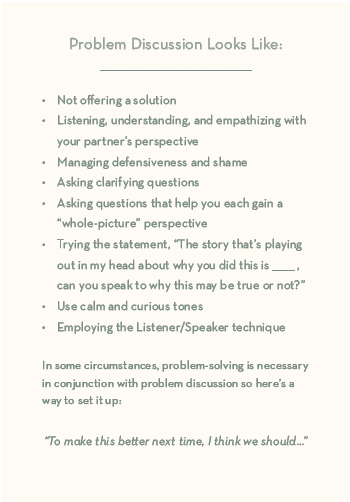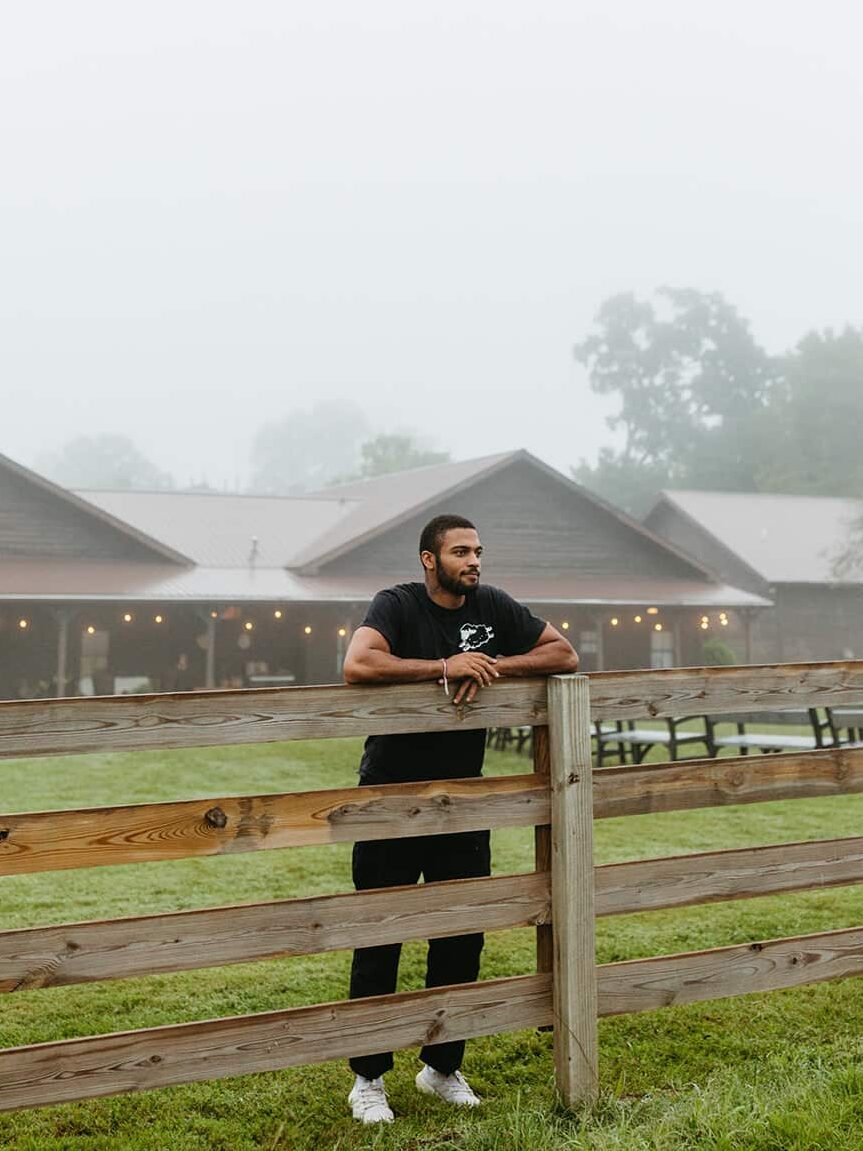Fighting Fair
By Caroline Bravo, LPC-MHSP
Fighting Fair
4 Rules of Engagement for Healthy Conflict with Your Partner
Caroline Bravo, LPC-MHSP
Have you ever felt like you’re stuck on a merry-go-round trying to navigate conflict with your partner?
It can be dizzying, intolerable, and isolating. You find yourself, yet again, having the same familiar arguments but feeling like you can’t break through to the real issue.
You’re not alone.
From my experience as a therapist working with couples, and my own experience in marriage, I can tell you that navigating conflict in long-term, committed relationships is complex and imperfect.
I don’t say this to overwhelm you, but to give you permission to embrace just how hard relationships can be for all of us. Many of us struggle to embrace and approach conflict in healthy, productive ways.
I want to provide you with the structure to navigate conflict and repair it in a way that helps you receive the love that you deserve.
How we do conflict matters.
The acclaimed couple’s therapist Dr. John Gottman of The Gottman Institute says that it’s not the frequency of conflict that determines the health of a relationship but the “how” of conflict. What matters most is how we approach conflict, not how often it occurs. That’s why we need to learn to fight fair with our partner.
I’m going to equip you with four rules of engagement* that, when utilized in conflict, will build empathy, understanding, and connection. It is essential to focus more on the dynamic that is continually playing out between you and your partner rather than placing blame for the individual behaviors.
*(These rules of engagement do not apply to emotionally and physically abusive relationships. Patterns of abuse require the help of a professional and sometimes, safety planning and distance rather than connection)
4 Rules of Engagement For Navigating Conflict With Your Partner
Learning to navigate conflict differently with your partner takes practice, so as you practice these rules, perhaps start with the smaller disagreements rather than the larger ones.
1. Learn Your Inherited Conflict Style
When you think back to your childhood…
- How do you remember feeling when your primary caregivers had conflict?
- Did you watch frequent, frightening, or confusing conflict? Did you not see any conflict at all?
- How did you make sense of what you saw?
All these questions provide useful information that can help you understand your inherited conflict style.
Sometimes it can be hard to believe that the past has that much influence on our present, but I can say after years of working with humans, it does. Our earliest imprints of conflict and safety impact the way we show up in our future relationships. When you were a child, you were remarkably observant, and your primary caregivers’ implicit and explicit messaging mattered. You picked up habits, developed preferences, and tried your very best to make sense of others’ behavior.
A few common examples I see exist around an abundance of conflict or an absence of conflict. If someone saw frightening conflict, their inherited conflict style could mimic that frightening conflict, or conversely, they may have developed a type of fear or avoidance of conflict. If you never saw conflict in your home—it was avoided and hidden at all costs—it can be hard to lean into healthy conflict.
Take some time to remember what you felt and saw in conflict and how that may differ or mimic how you engage in conflict with your partner now. Create space to share these experiences and findings with your partner. Having an awareness of how your past may be affecting how you show up in your relationship today will build empathy for both you and your partner.
If you want to learn more about you and your partner’s conflict style, check out this article from the Gottman Institute.
2. Slow Down and Add Structure to Your Dialogue
When we are activated, our nervous system wants us to either move quickly or freeze, so it’s a radical act (and takes some extra grace and practice) to instead slow down when conflict arises with your partner.
I like to remind clients that the words we use are important because not only can they activate our partner, but also us as well. The following technique will add structure to help you and your partner slow down, gain consciousness around the language you’re using, and truly hear and see one another.
Listener/Speaker Technique
In the midst of conflict, introduce this practice to slow down and implement structure.
- One partner acts as the Speaker and gives the Listener 40 seconds of their perspective on the conflict.
- The other partner acts as the Listener. The listener’s job is to manage the defensive voice that may arise in their head and stay present with the speaker and their perspective.
- The Listener then reflects back what they heard the Speaker say. (Sometimes there is a disconnect between what is said, and what is heard.)
- Switch roles and repeat.
If we want different results from our conflict, we must find a different structure for how we enter into it. As a therapist, I see time and time again that one of the main healing forces in therapy is having our hurt and frustrations empathetically held. You have an opportunity to give your partner that.
The more you practice this structured form of conflict, you may realize you are more frustrated by the issue than you are with your partner.
3. Lean into Problem Discussion vs. Problem Solving
Both problem discussion and problem-solving are integral for repair. But what happens when there is no “solution” to the problem you and your partner are facing?
“Qualitative research on the content of conflict for couples shows that 69% of problems in a relationship are “unsolvable.” (Gottman Institute)
In every relationship, there are two people with different personality traits, beliefs around spending, childrearing, and any other number of topics. Dr. Gottman says that trying to solve unsolvable problems is not only counterproductive but ultimately impossible.
The stat that 69% of problems are unsolvable can be hard to take in, I know. But perhaps it can serve to release you from the notion that you need to change your partner or yourself, and instead invite you into building understanding, compromise, and openness rather than rigidity and contempt.
Psychologist Dan Wile once said, “When choosing a long-term partner, you will inevitably be choosing a particular set of unresolvable problems.” The key is to build a relationship founded on healthy discussion between two people who are committed to connection through conflict.
4. Take on the Perspective of an Objective Third Party
As a therapist, I often encounter partners who resort to finger-pointing.
Partner A says “I can’t wait for this therapist to straighten them out,” and partner B says, “Wait until they hear how wrong they are from this therapist,” and in this dynamic, partner A and partner B aren’t willing to own their part in the conflict.
I see this pitfall often in therapy, and the cure is an “us” perspective rather than a “me” perspective.
So, how do we shift our perspective from “me” to “us?”
Let’s walk through a quick exercise together.
Think of a common conflict you have with your partner. Once you have the conflict in mind and you take some time to sit in the possible discomfort that may arise as you bring it up, I want you to switch identities for a moment and enroll as an objective, loving third-party. Do you have that person in mind? Think of someone who wants the best for both of you.
While in this role, what feedback would this person have to say about the following?:
- What each person in the conflict is doing really well
- What each person could improve upon
- The dynamic that is playing out: “It seems that when you do this behavior, the other partner does this behavior.”
This is a way to hotwire empathy and help step you out of defensiveness and victimization—and into ownership and connection. I’ve seen it work over and over, and it’s a beautiful thing.
These four strategies take time (and so much vulnerability) to navigate. If one particular skill makes you feel seen, or even makes you feel activated, I invite you to sit with it. Let your feelings of anger, sadness, or indifference inform you about what they may be protecting you from. I’ve found that feelings can be incredible messengers, so give them a voice and listen.
If you’re looking to increase your knowledge base, I strongly recommend reading the works of Dr. Alexandra Solomon and Dr. John Gottman, both have informed the techniques I use with clients and in my own marriage.
Give yourself permission to try, mess it up, get uncomfortable, and receive some love from your partner.
Remember you and your partner are on the same team—and start fighting fair!









Caroline Bravo, LPC-MHSP, is a therapist, wife, friend, and Enneagram 7. She is a licensed professional counselor and has a private practice in East Nashville. As often as she gets the chance, she works as an adjunct therapist at Onsite doing intensives with both individuals and couples. She enjoys working with clients who are open to exploring family of origin wounds, as well as clients who experience shame or anxious styles of attachment. Her primary modality is experiential therapy, but she loves any client who is open to incorporating mindfulness into their system!










